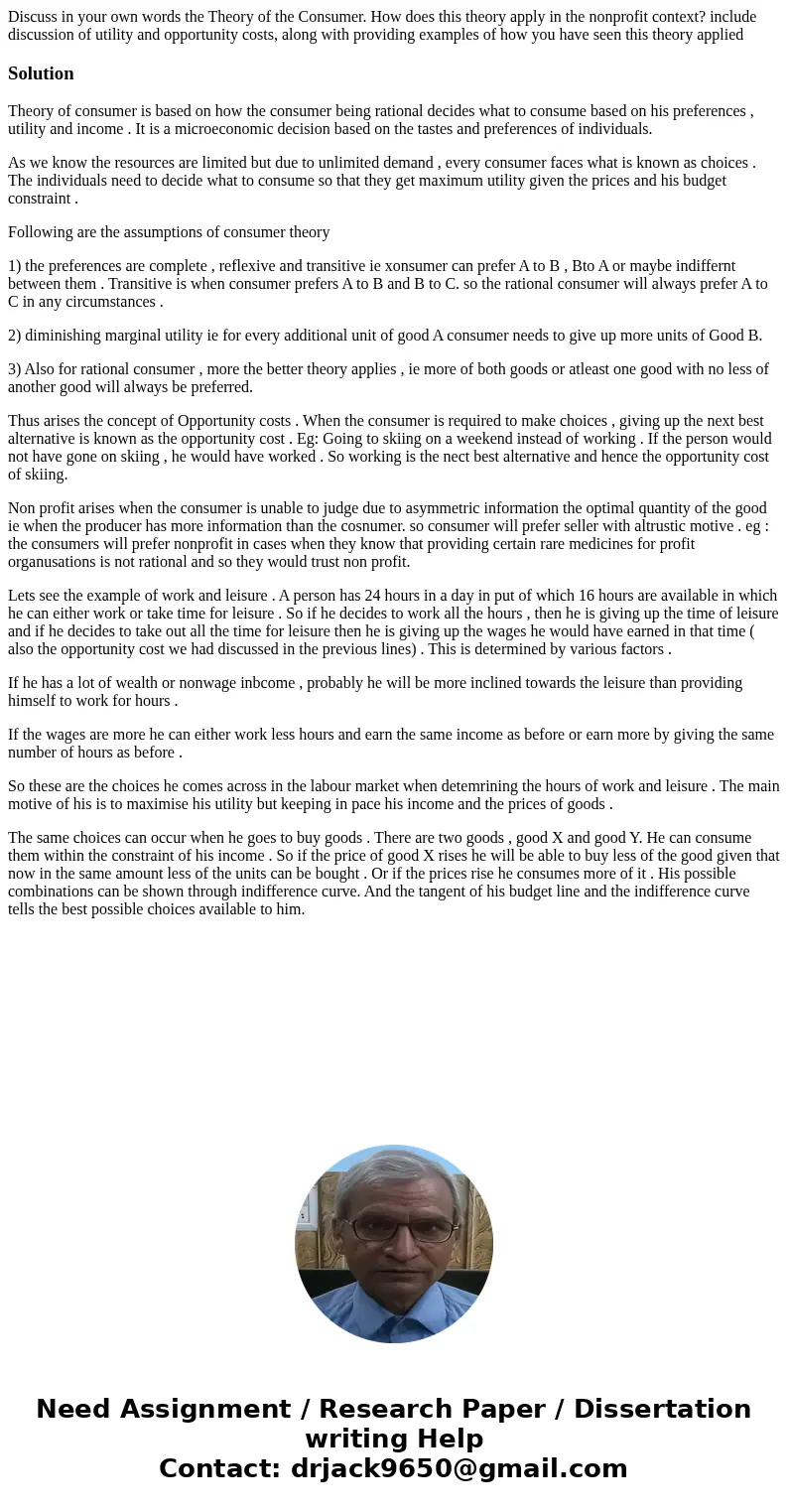Discuss in your own words the Theory of the Consumer How doe
Discuss in your own words the Theory of the Consumer. How does this theory apply in the nonprofit context? include discussion of utility and opportunity costs, along with providing examples of how you have seen this theory applied
Solution
Theory of consumer is based on how the consumer being rational decides what to consume based on his preferences , utility and income . It is a microeconomic decision based on the tastes and preferences of individuals.
As we know the resources are limited but due to unlimited demand , every consumer faces what is known as choices . The individuals need to decide what to consume so that they get maximum utility given the prices and his budget constraint .
Following are the assumptions of consumer theory
1) the preferences are complete , reflexive and transitive ie xonsumer can prefer A to B , Bto A or maybe indiffernt between them . Transitive is when consumer prefers A to B and B to C. so the rational consumer will always prefer A to C in any circumstances .
2) diminishing marginal utility ie for every additional unit of good A consumer needs to give up more units of Good B.
3) Also for rational consumer , more the better theory applies , ie more of both goods or atleast one good with no less of another good will always be preferred.
Thus arises the concept of Opportunity costs . When the consumer is required to make choices , giving up the next best alternative is known as the opportunity cost . Eg: Going to skiing on a weekend instead of working . If the person would not have gone on skiing , he would have worked . So working is the nect best alternative and hence the opportunity cost of skiing.
Non profit arises when the consumer is unable to judge due to asymmetric information the optimal quantity of the good ie when the producer has more information than the cosnumer. so consumer will prefer seller with altrustic motive . eg : the consumers will prefer nonprofit in cases when they know that providing certain rare medicines for profit organusations is not rational and so they would trust non profit.
Lets see the example of work and leisure . A person has 24 hours in a day in put of which 16 hours are available in which he can either work or take time for leisure . So if he decides to work all the hours , then he is giving up the time of leisure and if he decides to take out all the time for leisure then he is giving up the wages he would have earned in that time ( also the opportunity cost we had discussed in the previous lines) . This is determined by various factors .
If he has a lot of wealth or nonwage inbcome , probably he will be more inclined towards the leisure than providing himself to work for hours .
If the wages are more he can either work less hours and earn the same income as before or earn more by giving the same number of hours as before .
So these are the choices he comes across in the labour market when detemrining the hours of work and leisure . The main motive of his is to maximise his utility but keeping in pace his income and the prices of goods .
The same choices can occur when he goes to buy goods . There are two goods , good X and good Y. He can consume them within the constraint of his income . So if the price of good X rises he will be able to buy less of the good given that now in the same amount less of the units can be bought . Or if the prices rise he consumes more of it . His possible combinations can be shown through indifference curve. And the tangent of his budget line and the indifference curve tells the best possible choices available to him.

 Homework Sourse
Homework Sourse